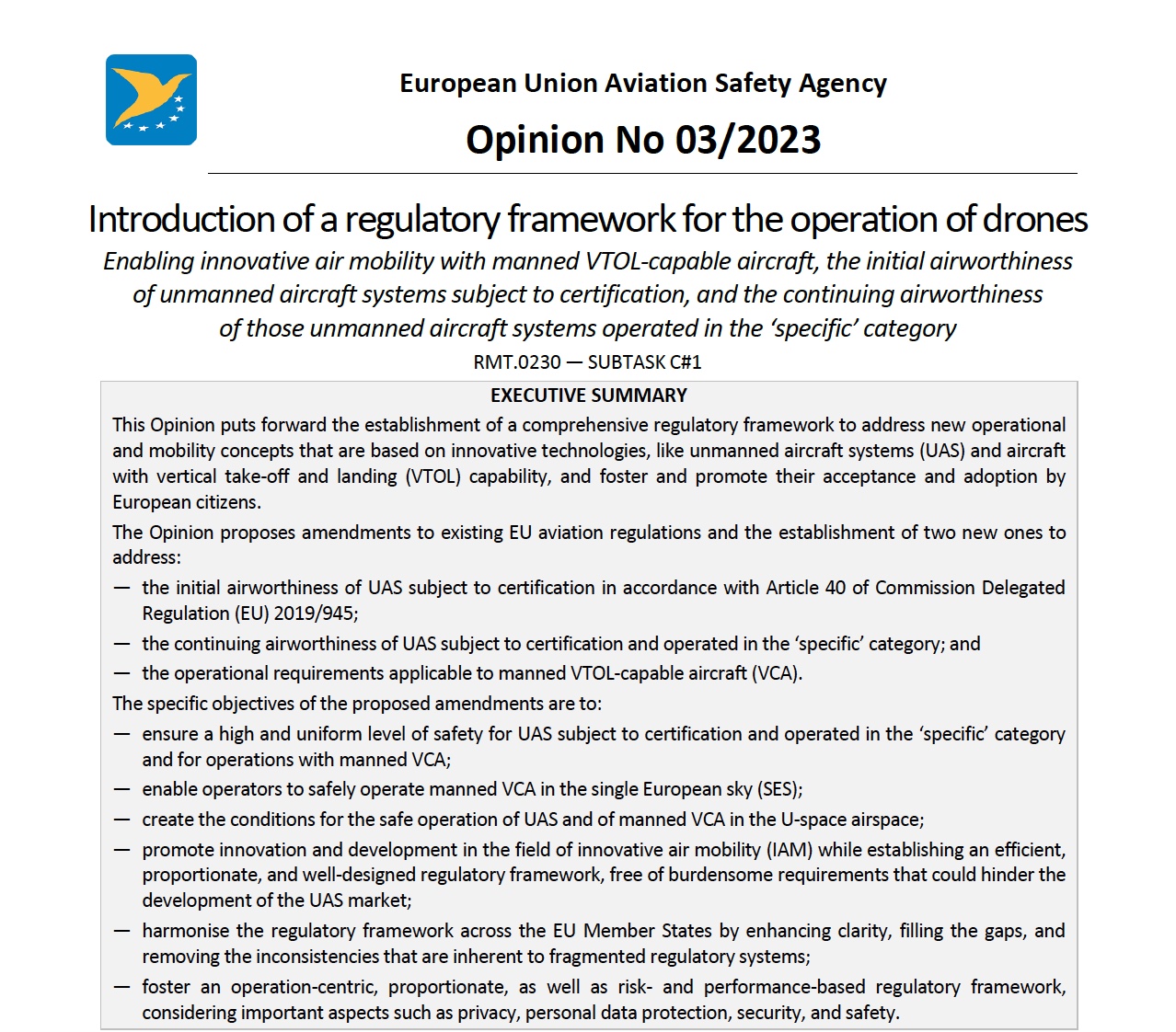On August 31, EASA (the European Union Aviation Safety Agency) published the opinion document related to the presentation of a UAS regulatory framework related to Advanced Air Mobility and certification and continued airworthiness standards.
EASA has drafted opinion document 03/2023, with the idea of translating it into a regulation. The phases for the introduction of the regulation involve the contribution of groups of experts dedicated to each of the affected aspects. All interested parties have been consulted through Notice of Proposed Amendment (NPA) 2022-06. Comments were received from interested parties, including industry, national aviation authorities, manufacturers, UAS operators and service providers. These contributions can be consulted in section 2.4 of the final published document.
The Opinion proposes amendments to existing EU aviation and UAS rules and addresses the following issues.
- The initial airworthiness of UAS subject to certification in accordance with article 40 of EU Delegated Regulation 2019/945.
- The maintenance of the continued airworthiness of the UAS subject to certification and operated in the specific category.
- The operational requirements applicable to manned aircraft with VTOL, vertical takeoff and landing capabilities.
The specific objectives of the proposed modifications are:
1.- Guarantee a high and uniform level of safety for UAS subject to certification and those operated in the specific category and for operations with VTOL manned aircraft (VCA).
2.- Allow operators to safely operate manned VCAs in the Single European Sky (SES).
3.- Create the conditions for the safe operation of UAS and manned VCA in U-Space.
4.- Promote innovation and development in the field of innovative air mobility (IAM) while establishing an efficient, proportionate and well-designed regulatory framework, free of burdensome and complex requirements that could hinder the development of the UAS market.
5.- Harmonize the regulatory framework across all EU Member States by improving clarity, filling gaps and eliminating inconsistencies inherent to fragmented regulatory systems.
6.- Promote a regulatory framework focused on operations, proportionate and based on risk and performance, considering important aspects such as privacy, personal data protection and security.
You can consult the document that will soon be transferred to the implementing regulations, substantially modifying EU Regulation 748/2012 and EU Implementing Regulation 947/2019, at the following link:
https://www.easa.europa.eu/en/document-library/opinions/opinion-no-032023


